About sex, parasites, red queens and dried rotifers
By: Noam Levithan and Yonat Ashchar
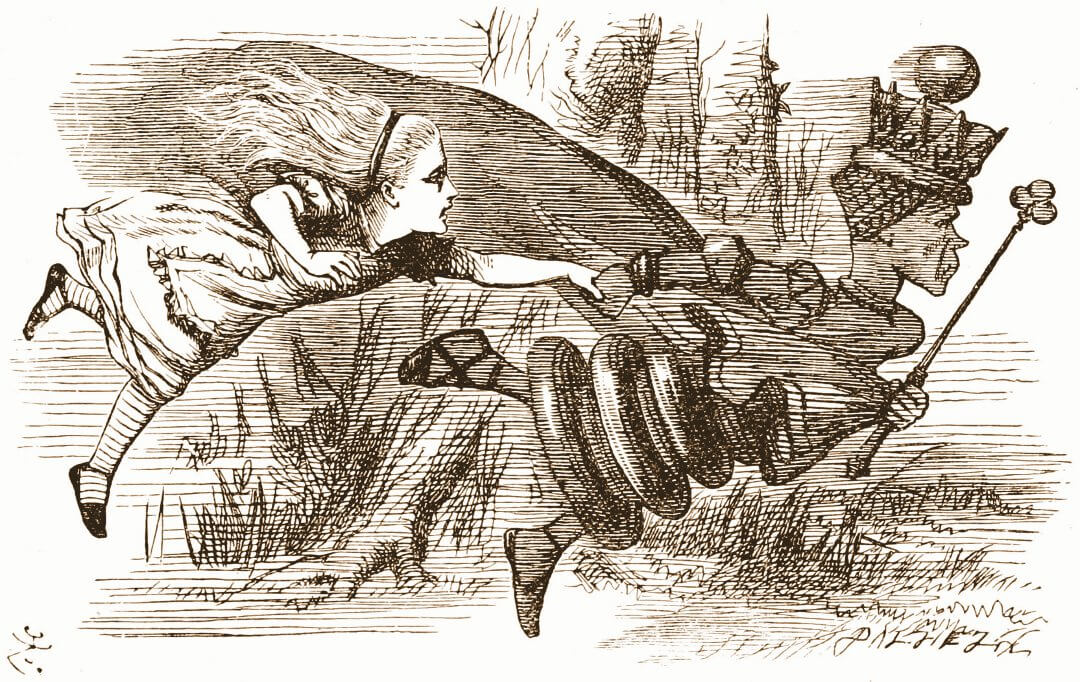
What do you actually need sex for? The vast majority of animal species reproduce through sexual reproduction, despite the wastefulness involved. And there is probably a reason for this: according to the accepted theories, an animal that persists in asexual reproduction for a long time will eventually become extinct. Among other things, the extinction is expected because parasites that attack the animal, but multiply by sexual reproduction, will evolve faster than it and cause its extinction. Studies on the development of sexual reproduction were done, among other things, in snails, where one can find species that reproduce by sexual reproduction alongside similar species that reproduce asexually, and in rotifers - microscopic invertebrates that live in freshwater environments. Unlike other asexual animals, the rotifers, which belong to the class Bdelloidea, have survived for 80 million years even though they reproduce only by asexual reproduction. In this entry, the second in a series of entries dealing with parasites, we will examine the advantages and disadvantages of asexual reproduction. Why did most organisms give up on it? And how do rotifers survive and thrive?
Why sex? Because of the parasites
Biologists have been investigating for nearly 40 years why sex exists, research that began when the British biologist John Maynard Smith made it clear that animals that reproduce through sexual reproduction pay a high price for it. After all, animals that reproduce asexually, meaning without sex, have many advantages over animals that reproduce sexually. In heterozygous reproduction, for example, all the mother's genes are passed on to her offspring and all of these offspring are females capable of producing offspring on their own. On the other hand, animals that breed through sexual reproduction pass only half of their genetic load to the next generation, risk contracting various sexually transmitted diseases due to the necessity of having very close encounters with other animals, and of course "waste" some of their energy producing offspring that do not contribute to the growth of the population - the males.
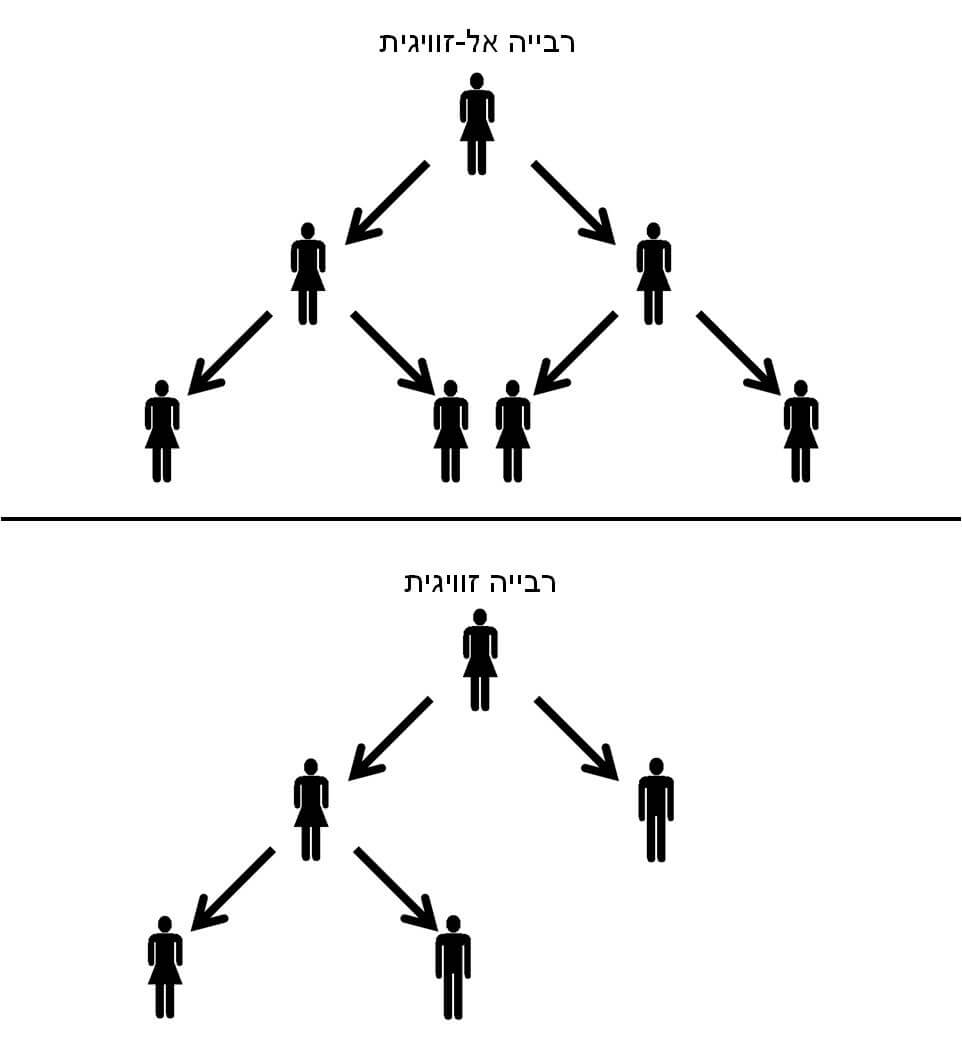
If so, why do almost all animals reproduce through sexual reproduction? And why do biological species that reproduce exclusively through asexual reproduction become extinct, for the most part, within a short time on an evolutionary scale?
One of the hypotheses that explains this is the hypothesis that sexual reproduction helps in dealing with parasites by increasing genetic diversity. The hypothesis was demonstrated in several experiments. In each offspring of an organism that multiplies through sexual reproduction, the genes are devoured anew, even in non-identical twins who are members of the same generation, creating combinations that may protect against parasites. To survive, the parasites must also undergo rapid changes that allow them to cope with the new defenses of their hosts. This joint evolution (co-evolution) of the parasite and the host is the basis of the "Red Queen" hypothesis. The hypothesis is named after the Red Queen from Lewis Carroll's book "Through the Looking Glass and What Alice Found There". In the book, the queen takes Alice on a race to nowhere, and when Alice comments on this, she explains that "you have to run as fast as you can, to stay in the same place" (translation: Rena Litvin, published by Kibbutz HaMaheed the New Library). Since the animals that abstain completely from a species "run", that is, change, more slowly than their counterparts that reproduce through sexual reproduction, they are more vulnerable to parasites and fail to develop defenses against them in time. As a result, populations of abstinence are devastatingly affected by parasites, sometimes to the point of extinction.
Galileo magazine as a gift! Click here to receive the benefit
One way to test the "red queen" hypothesis is by comparing identical biological species, living in the same environment and vulnerable to the same parasites, but reproducing either through sexual or asexual reproduction. To the delight of biologists, a snail that meets these conditions can be found in the lakes of New Zealand (Potamopyrgus antipodarum, whose name means "tower in the river on the other side of the world"). Prof. Kurt Lively (Lively) from Indiana University, Bloomington, who has been studying snails and their parasites for many years, and his colleagues published two studies in 2009 confirming the "Red Queen" hypothesis.
The parasite that attacks the snails is Trematoda, a parasitic flatworm, of the genus Microphallus ("tiny pin"), which uses the snails as intermediate hosts on its way to the final hosts, filtering ducks. The adult leeches live in the intestines of filtering ducks. The snails become infected with leech when they eat fertilized leech eggs passed out in the ducks' feces. The eggs hatch in the digestive system of the snails and from them emerges an immature (mature) respirant called a miracidium. The female migrates to the reproductive organs of the snails and multiplies in asexual reproduction while replacing the tissue of the reproductive system of the snails and sterilizing them. The preemie creates hundreds to thousands of cysts (a kind of spores, called metacercaria). The cysts hatch when a duck swallows them, where they develop into adult worms that reproduce sexually and start laying eggs within 24 hours of hatching.
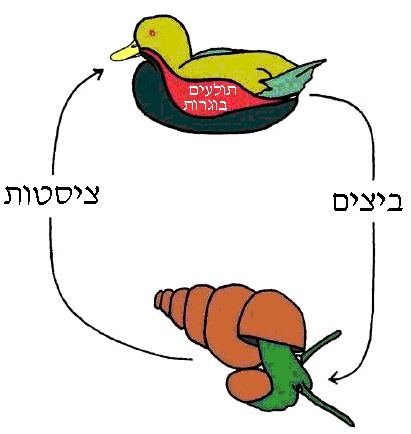
Since the leeches' life cycle requires ducks, and filtering ducks do not graze in deep water, it is almost impossible to find the parasite in deep-living snails. Since the snails of the depths do not have to deal with the parasite, the snails that reproduce asexually overtake their brothers that reproduce sexually and make up the majority of the snail population in the depths of the lakes - in accordance with the "Red Queen" hypothesis. On the other hand, the researchers saw that there were ups and downs in the population of snails that reproduce by asexual reproduction in the shallow waters. Varieties of snails that were common at the beginning of the observations, made in 1994, became increasingly vulnerable to parasites that had undergone selection to better suit these common varieties. As the parasites spread, the common varieties of snails dwindled, until in 2004 some of the varieties became completely extinct. Meanwhile a rare strain of asexual snails, which was resistant to the current version of the parasitic leeches, spread and became the most common of the asexuals. But while the asexual snails went through cycles of ebb and flow in the size of the population and even the extinction of some varieties due to the parasites, the population size of the sexual snails almost did not change but remained stable over time, precisely the advantage that the "Red Queen" gives to those who multiply by sexual reproduction (on another avenue for research The "Red Queen" hypothesis see HERE).
How do rotifers escape from parasites?
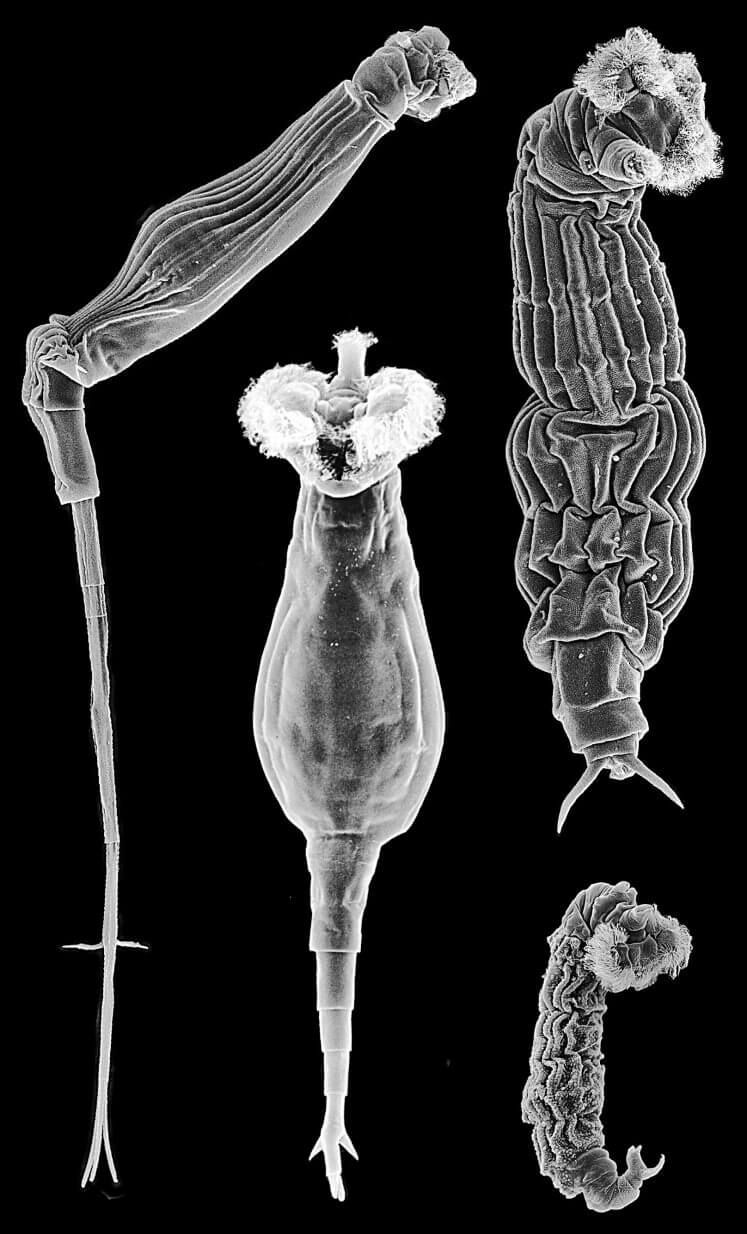
Despite this advantage, there is a whole class of animals that seems to have managed to escape from the "Red Queen". These are the rotifers from the class Bdelloidea that continue from DNA to reproduce exclusively by asexual reproduction. Rotifers reproduce by virgin reproduction, when the mother lays unfertilized eggs that develop into daughters that are her clone. Although rotifers have been studied for more than three centuries, since the father of microbiology Antony van Leeuwenhoek first observed them, No male has ever been found, or some sign of sexual reproduction, among the hundreds of species that make up this class of rotifers.
Rotifers also do not compensate for their sexless lifestyle by hiding in a protected place, on the contrary - they are extremely common and the freshwater environments in which they live are very diverse. They are able to exist and multiply in moist soils and on mosses, lichens and tree barks as well as in puddles and streams. Most of the aquatic environments that the rotifers inhabit are transient and may evaporate at any moment, but the rotifers are able to cope with this thanks to their ability to completely dry out at any stage of their lives when their habitat dries up, and enter a state of suspended existence. They are able to survive in this state, called anhydrobiosis ("life without water"), for up to nine years and return to active life when moisture returns. In their dry form they are smaller than dust particles and may be dispersed by the wind to great distances, thus settling new places.
Studies done in recent years have revealed how rotifers manage to achieve the benefits attributed to sex even though they reproduce by asexual reproduction - they developed ways get rid of pests invading their genome, andincrease the variety The genetic, but how do they deal with parasitic organisms?
Evolutionary biologists Christopher Wilson (Wilson) and Paul Sherman (Sherman) from Cornell University in Ithaca, New York decided to test whether rotifers' ability to dry out allows them to escape parasites. In a study published in January 2010 in the Science Weekly Science, the researchers infected 95 identical colonies of rotifers of the species Habrotrocha elusa in the parasitic fungus Rotiferophthora angustispora ("Destroys rotifers through spores"), attacks only rotifers. The fungus infects rotifers when they ingest its tiny spores (conidia). The spores get stuck in the mouth of the unlucky rotifer that swallowed them and sprout into webs that digest the rotifer from the inside. The rotifer, eaten by the parasitic fungus, dies after about two weeks and the webs pierce the cover of its body and create spore carriers (conidiophores) at the surface of the water, which scatter hundreds of new spores in the water. These spores are ingested by the dead rotifer's sisters and can quickly destroy the entire rotifer colony.
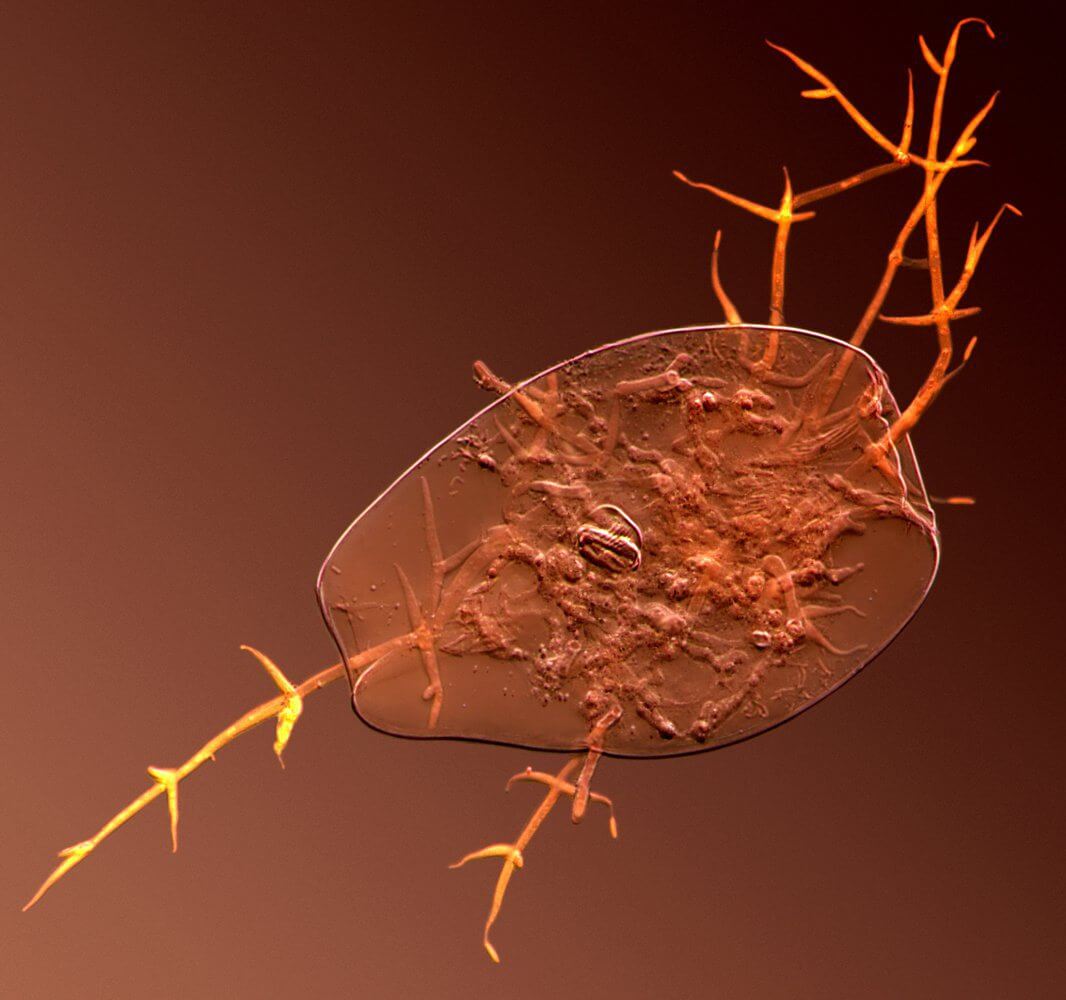
The researchers showed that when they dried the environment of the rotifers for a week or two, and allowed them to enter a state of dormant animals, the fungus that was in the water was destroyed and its spores and it seems that the rotifers avoided it. But about two days after the humidity returned, the fungus grew out of rotifer corpses that had been infected before drying, and quickly destroyed the rest of the population of identical sisters. On the other hand, when the dry period increased to three weeks or more, most of the rotifer populations remained completely free of the parasitic fungus, and multiplied and thrived unhindered when the researchers rewetted the environment. Even the spores of the fungus could not survive that long without water.
But, as mentioned, when the rotifers dry out in the wild, they are carried far away by the wind. In fact, they are so successful at this that they can often be detected in rain and wind samples from around the world. To mimic these conditions in the laboratory, the researchers put a dried population of rotifers infected with the fungus into a wind tunnel and exposed them to a light breeze. The wind blew the rotifers and parasites toward empty Petri dishes, which Wilson and Sherman moistened a week later. In most of the plates, rotifer colonies developed free of parasites. In other words, the rotifers escaped the parasitic fungus in the laboratory with the help of a dry period of at least three weeks or wind dispersal and one week of dryness.
In nature, the periods of dryness as well as the distance of dispersal by the wind are much greater, thus enabling the rotifers to leave their parasites behind, find places without parasites and thrive in them. Thus, while the fight against parasites and the race against the "Red Queen" probably contributed to the development of sexual reproduction and we have to thank them for the joy of sex, the rotifers that breed in asexual reproduction, chose to abandon the race and instead play an endless game of hide and seek with their parasites.
The first entry in the series of articles "The Enemy Within" described A parasitic larva that abandons its host in times of danger. The next entry in the series will deal with parasites that live in water and replace fish organs, invade people and help in the study of the evolution of whales.
The original article was published on Dr. Noam Levitan's blog SciPhile and in the Galileo magazine
More on Galileo:
* Research: How can dietary fiber prevent stroke?
* Watch: A sea monster with three hearts and an eye with a diameter of 30 cm
* Researchers have developed a chip to detect breast cancer
for further reading
Snails article:
Jokela, J., Dybdahl, MF & Lively, CM The maintenance of sex, clonal dynamics, and host-parasite coevolution in a mixed population of sexual and asexual snails. Am. Nat. 174, S43–S53 (2009). doi: 10.1086/599080
The rotifers article [PDF]:
Wilson, CG & Sherman, PW Ancient asexual bdelloid rotifers escape lethal fungal parasites by drying up and blowing away. Science 327, 574-576 (2010). doi: 10.1126/science.1179252
Dror Bar-Nir, "Bacteria against males", "Galileo" 94.
Dina Zafariri, "Why sex? Riddles and truths from the bedroom of evolution", "Galileo" 36.
